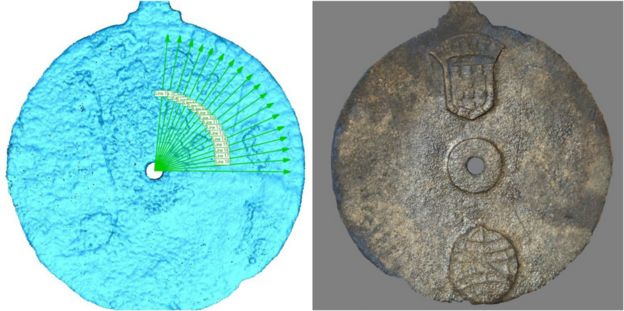The Jerusalem auction house that sold a note written by Albert Einstein for $1,560,000 on Tuesday night said it was flabbergasted by the winning bid. “We were in total shock, we didn’t believe it was happening,” said Avi Blumenthal, a spokesman for Winner’s Auctions and Exhibitions. “It’s the highest price ever for an item sold at auction in Israel.”
The note, written shortly after Einstein learned he had been awarded the Nobel Prize in Physics, says simply: “A calm and modest life brings more happiness than the pursuit of success combined with constant restlessness.”
According to the auction house, located in the Givat Shaul neighborhood of Jerusalem, the letter was written by Einstein in the Imperial Hotel in Tokyo in October 1922. When a messenger delivered something to his room, the scientist found himself short of a tip. Instead he gave the bellboy two notes and “told the messenger to keep them, as their future value may be much higher than a standard tip,” said the auction house.
Blumenthal told The Jerusalem Post on Wednesday morning that the letters came to them directly from the great-nephew of the bellboy who delivered the message to Einstein.
He held on to the letter for many years, and a few months ago we held an auction of letters Einstein wrote to Prof. David Bohm, on mathematics, and they were sold at a nice price,” Blumenthal said. In that auction, the letter that fetched the highest price went for $84,000.
“It was publicized in a newspaper in Germany where he [the great-nephew] lives, and he saw this and said, ‘Okay, if they get good prices on Einstein, I’ll turn to them.’”
Bidding on the item started at $2,000 and the auction house estimated it would go for $5,000-$8,000; the final price was close to 200 times that amount. While Winner’s didn’t dream of the final sum the letter garnered, it did have an idea that this auction would attract greater interest than some of its others.
“In the weeks leading up to the auction,” Blumenthal said, “we saw people joining the website from Lebanon, from Jordan, from places that were a little unusual.”
The other note Einstein gave to the bellboy sold for $240,000.
That note said simply, “Where there’s a will, there’s a way.”
Both letters were written in German. Two other letters by Einstein in the auction sold for $33,600 and $9,600.
The auction included many items of Judaica, Holocaust memorabilia and holy books.
The handwritten notes of the Chatam Sofer on a tractate of Talmud, dated to 1914, sold for $26,400.
Blumenthal said about 30 people showed up in person to the auction house in Jerusalem, and most of the bidding took place online, as is common in auctions today. The purchaser of the letter has chosen to remain anonymous, but Blumenthal said the buyer is based in Europe.
“It just goes to show you,” said Blumenthal, “that many people own items at home and they couldn’t possibly dream of the value those items could have.”








